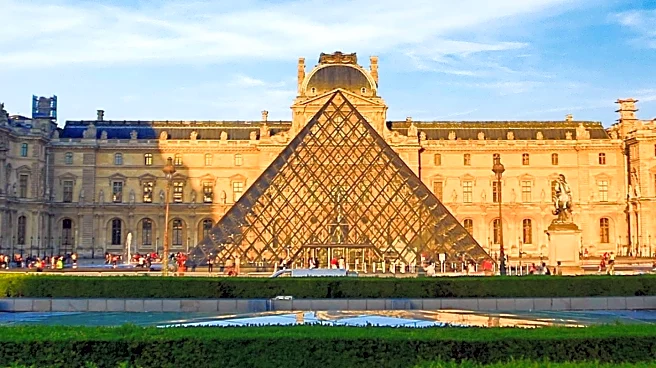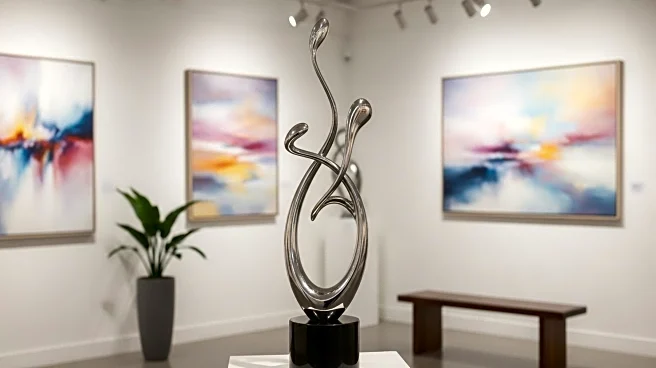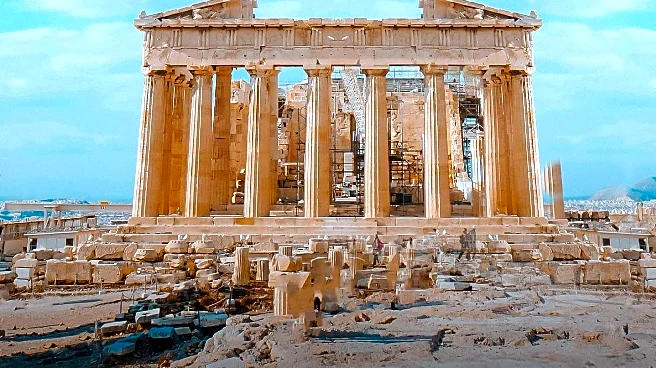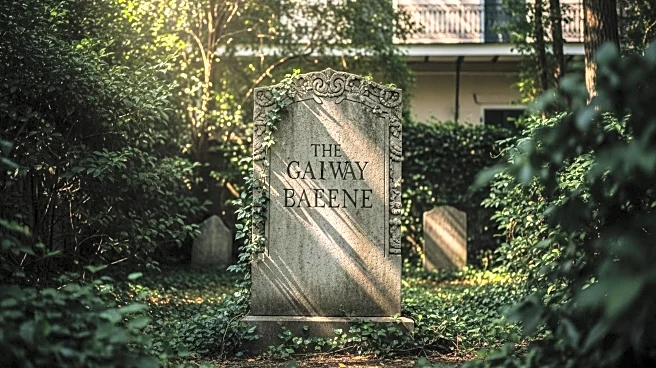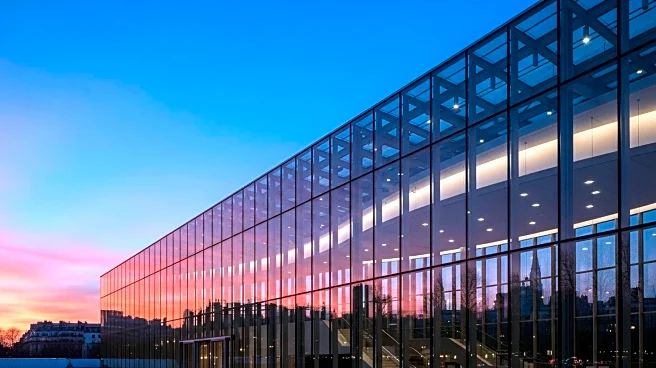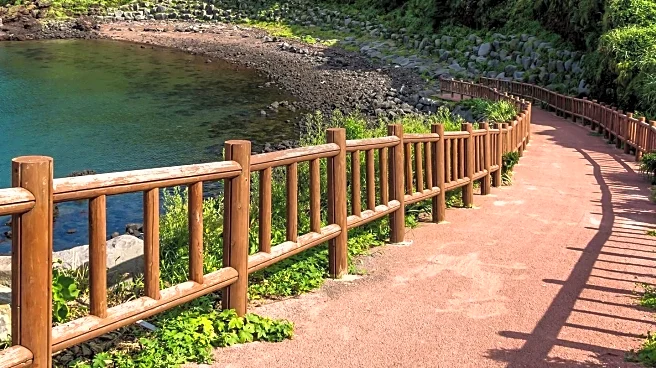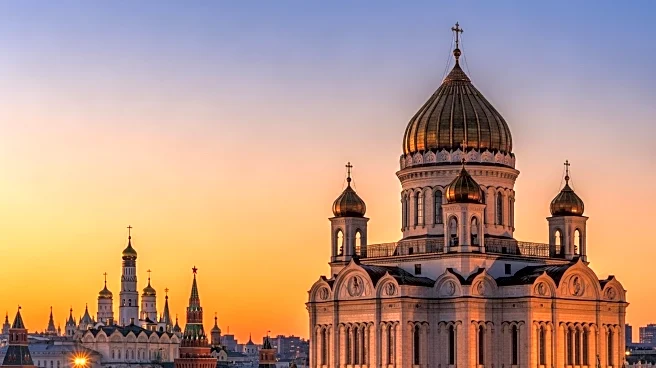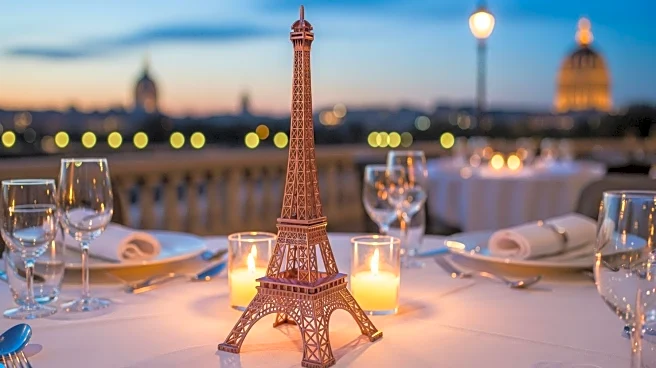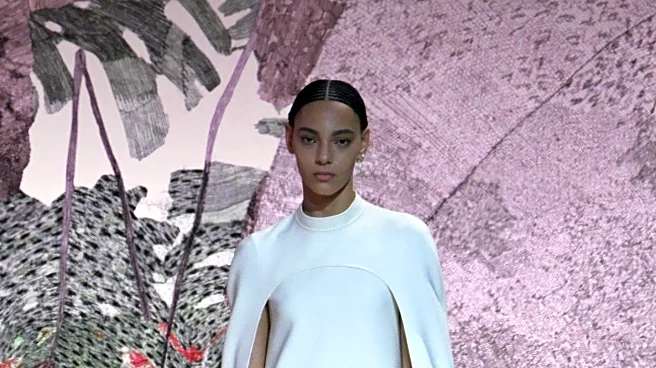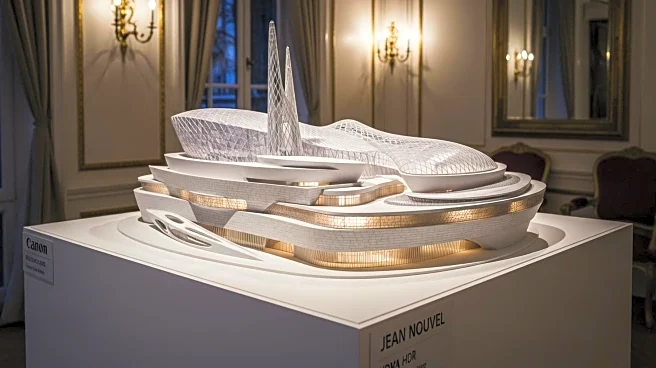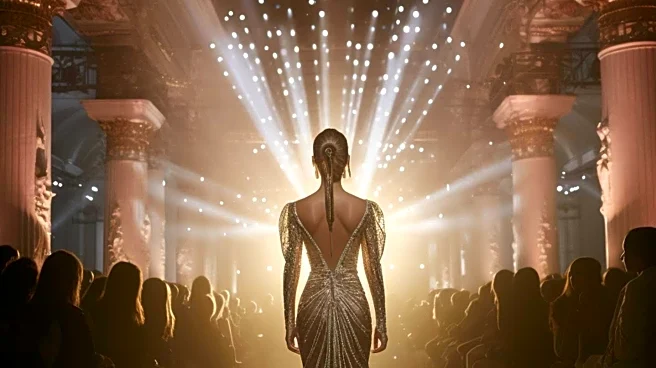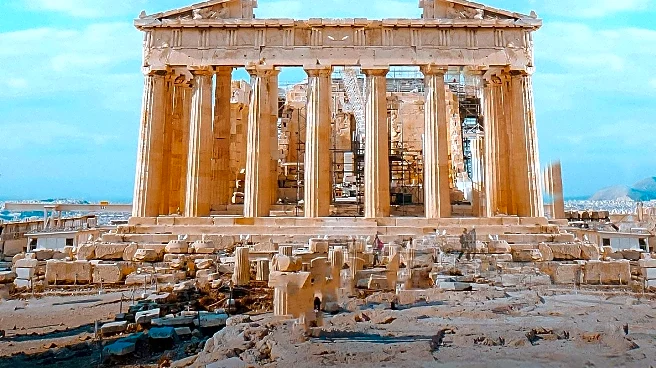What is the story about?
What's Happening?
The Louvre Museum has acquired its first video artwork, 'Les 4 temps' (The 4 Seasons), created by Algeria-born artist Mohamed Bourouissa. The video is inspired by the Tuileries Gardens in Paris, a historic site managed by the Louvre since 2005. The gardens, originally created for Catherine de’ Medici in 1564, are a UNESCO Historic Monument and World Heritage site. Bourouissa's work connects to his childhood, featuring the 4 Temps mall in La Défense. The video will be displayed in the Salle de la Chapelle from October 22, 2025, to January 19, 2026. The acquisition is part of the Louvre's Histoire du Louvre program, which focuses on works referencing the museum's history.
Why It's Important?
The acquisition of Bourouissa's video marks a significant expansion of the Louvre's collection into contemporary media, reflecting the museum's commitment to embracing diverse artistic expressions. This move highlights the growing importance of video art in the global art scene, offering new ways to engage audiences with historical and cultural narratives. By incorporating contemporary works, the Louvre is broadening its appeal to younger audiences and adapting to changing artistic trends. The video also serves as a bridge between past and present, connecting historical sites with modern artistic interpretations.
What's Next?
The video will be on display at the Louvre, providing visitors with an opportunity to experience Bourouissa's unique perspective on the Tuileries Gardens. The museum may continue to expand its collection of video art, potentially collaborating with other contemporary artists to explore new themes and narratives. This acquisition could inspire other museums to integrate video art into their collections, further legitimizing the medium within the art world.
Beyond the Headlines
Bourouissa's work raises questions about the role of public spaces in art and how they can be reimagined through contemporary media. The video’s connection to the artist's childhood adds a personal dimension, inviting viewers to consider the intersection of personal history and public heritage. This acquisition may encourage discussions on the preservation of cultural sites and their representation in modern art.
AI Generated Content
Do you find this article useful?
